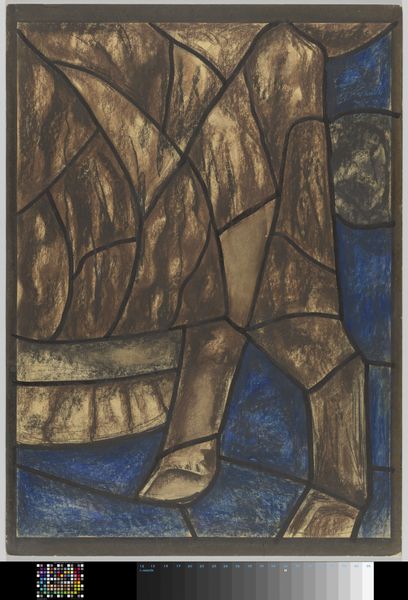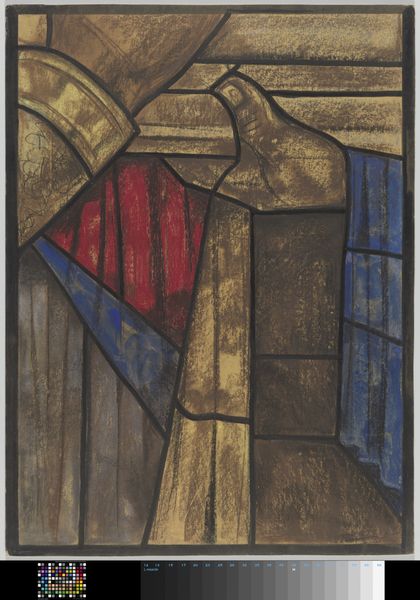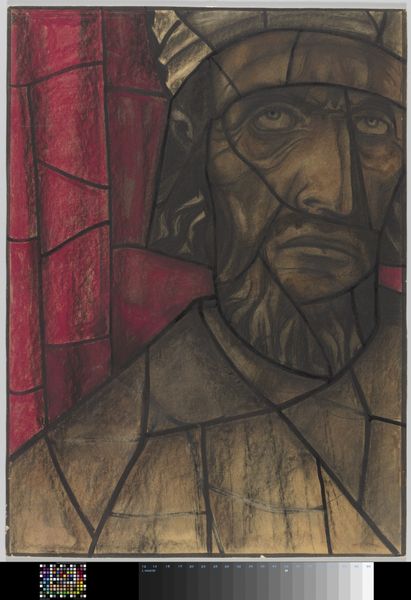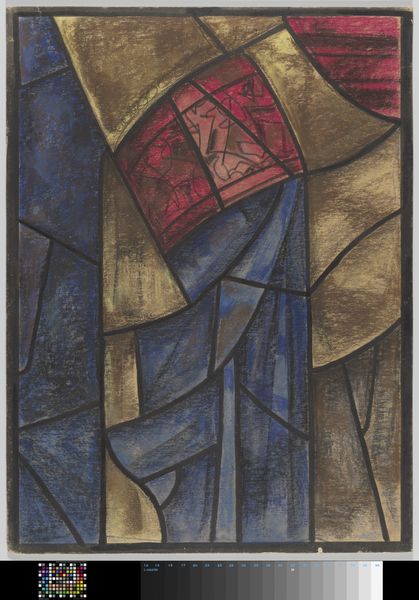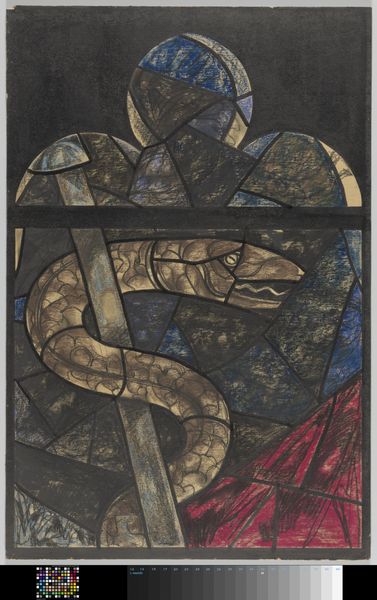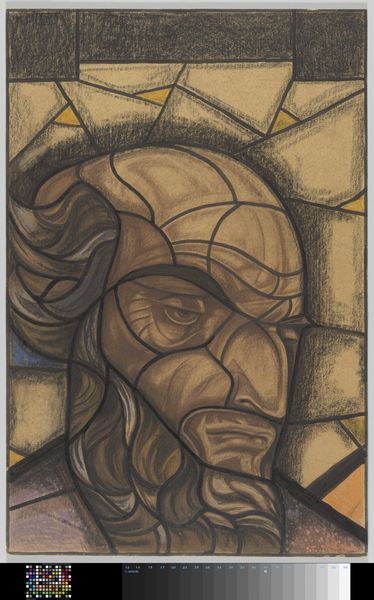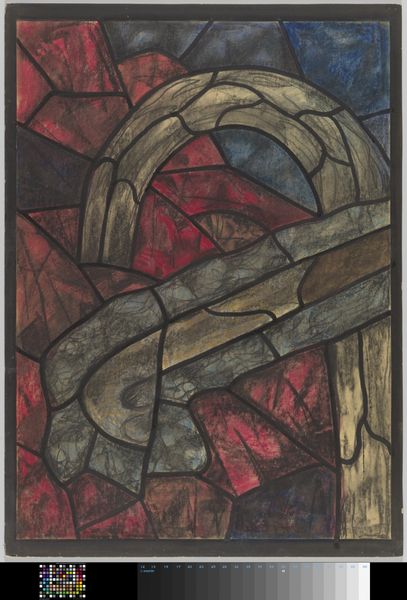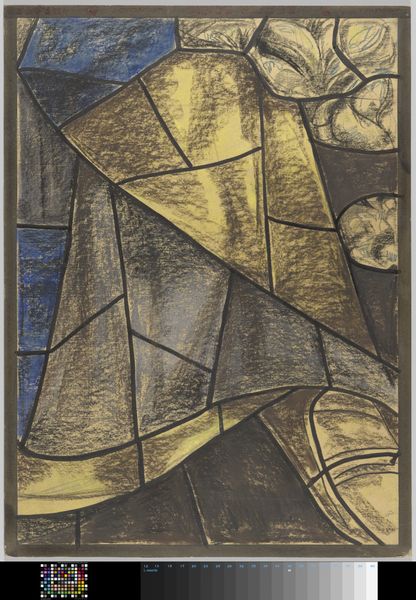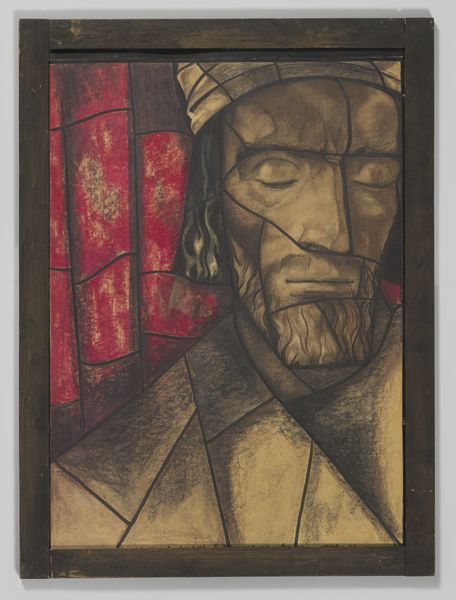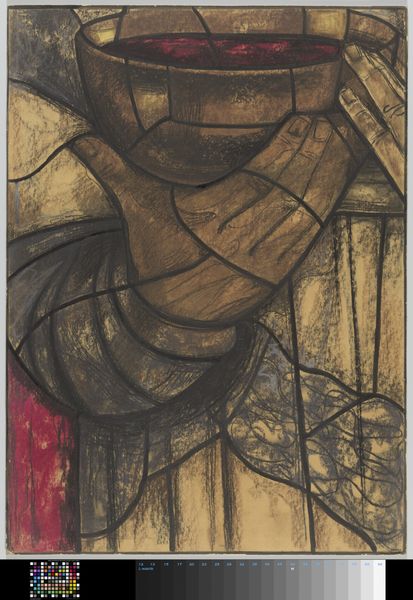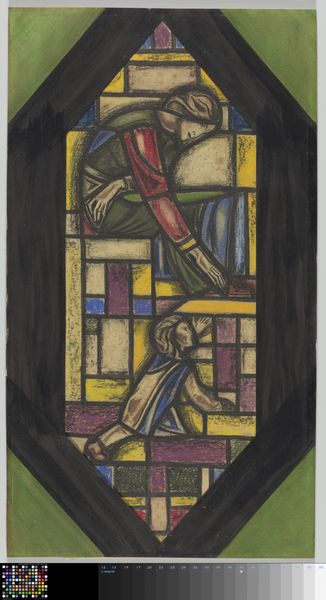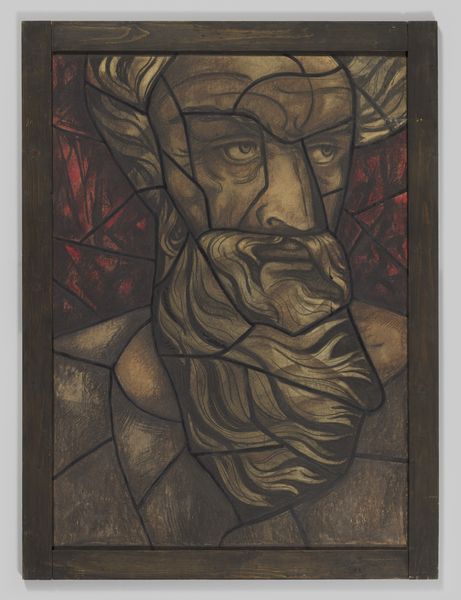
Ontwerp voor raam in het Noordertransept in de Dom te Utrecht c. 1934
0:00
0:00
drawing, mixed-media, tempera, glass
#
portrait
#
drawing
#
mixed-media
#
medieval
#
tempera
#
glass
Dimensions: height 1087 mm, width 810 mm
Copyright: Rijks Museum: Open Domain
Curator: The piece we’re looking at is a design from around 1934 by Richard Nicolaüs Roland Holst, for a window in the northern transept of the Dom Church in Utrecht. Editor: My first impression is one of serene melancholy. The downcast eyes and the overall cool palette create a mood of quiet reflection. Curator: Indeed. Holst was deeply involved in the Dutch Guild socialism movement. You can see how the medieval stained-glass style evokes a sense of communal values and perhaps a connection to earlier, more craft-based social models. Editor: Right, and when you look closer at this drawing—which is rendered with tempera and mixed media—you realize the incredible craftsmanship that goes into a stained-glass window design, it’s not just painting. The lead lines, visible as thick dark lines here, are structural and also contribute aesthetically to the overall composition, it really shows a connection between form and material constraint. Curator: Absolutely. And it’s worth noting that Holst's social ideals also influenced his artistic output, which makes one consider the public role art plays in fostering those ideals and a sense of collective identity. Editor: Looking at the process also makes me think about the actual making of the window—the physical labor, the selection and cutting of colored glass, the fusing and leading… it gives you a deep respect for the material realities behind such designs, it wasn't some machine but countless working hands. Curator: I agree. What stands out to me, though, is how Holst uses this medium to reach backward—linking modern social concerns with this powerful tradition. This design certainly asks us to consider the power and visual language that's carried forth by public imagery like the stained glass medium. Editor: Definitely. Considering the labor and the material embedded in each window changes how we understand its function, doesn’t it? It becomes a record of human endeavor in this place rather than only being about aesthetics. Curator: A perspective I fully embrace. Holst’s drawing embodies how artwork shapes cultural narratives, which reflects on our place in society and the flow of history. Editor: And looking at the handwork here, from rendering to imagining it becoming stained glass, helps me understand the importance of material process, it feels so right for this historical artwork in this church.
Comments
No comments
Be the first to comment and join the conversation on the ultimate creative platform.
